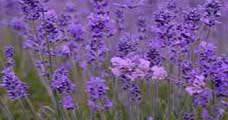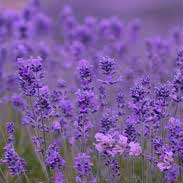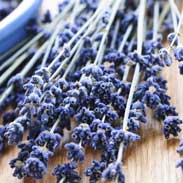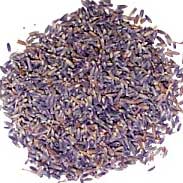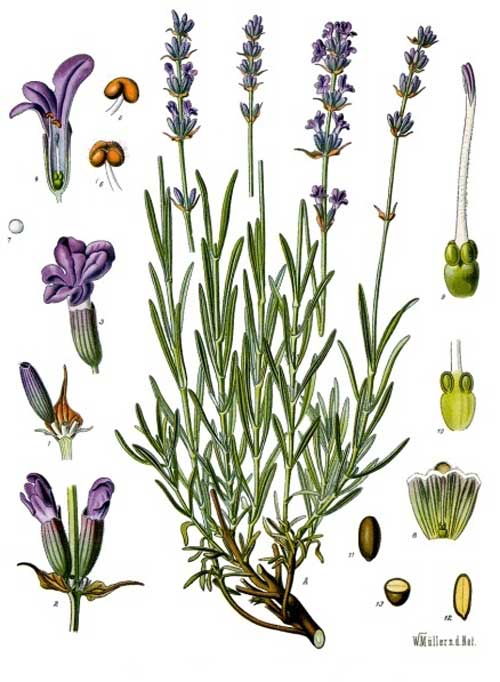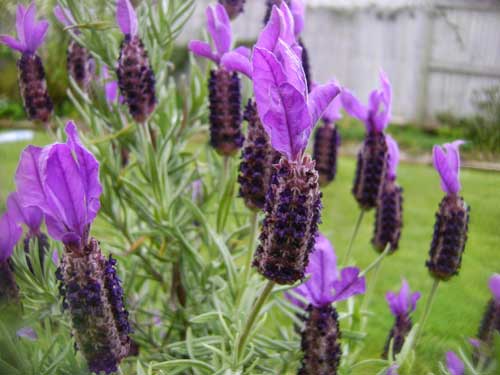
|
|
||||
| Our Pages ABOUT CONSTITUTIONAL MEDICINE
|
The distinctive, fragrant, purple flowers of Lavender, the wonderful little shrub that grows all over the world with its woody, crooked, flaky branches that give off straight, four-sided stems producing narrow, pale leaves and copious amounts of flowers.
Lavender was so extensively used as a cleansing and purifying herb by the ancient Romans that it took its name from the word 'lavare; to wash. Medicinally speaking Lavender has been used for depression and exhaustion, and for sleeplessness and irritability. Lavender oil is prized by all people who work with essential oils having multiple uses and indications. H Felter writes 'the spirit and the compound tincture of Lavender are delightful stimulants and carminatives. They are extensively employed to allay gastric uneasiness and nausea, in flatulent colic, nervous debility & general languor. For nervous and weak individuals, who faint easily they are simple and safe preparations. The compound tincture is added to many mixtures to give color, and all of the lavender preparations are used as corrigents and adjuvants of less agreeable medicines. Scudder especially valued the compound tincture in nervous irritability in children' WM Cook writes 'Lavender flowers are very diffusive in action, of equally relaxing and stimulating properties, influencing the nervous peripheries. They are used mostly as an adjunct to other agents in nervous agitation and restlessness, –their own action being soothing, and rendering stronger articles more acceptable to the stomach' The old English herbalist Parkinson writes 'Lavender is almost wholly spent with us to perfume linen, apparel, gloves and leather and the dried flowers to comfort and dry up the moisture of a cold brain and it is of especial good use for all griefs and pains of the head and brain' M. Grieves writes 'a few drops of Lavender oil in a footbath has a marked influence in relieving fatigue. Outwardly applied it relieves toothache, neuralgia, sprains and rheumatism. In palsy and similar disorders of debility and lack of nerve power, Lavender will act as a powerful stimulant' David Hoffmann writes 'this beautiful herb has many uses, culinary, cosmetic and medicinal. It can hep relieve headaches, particularly when they are stress related. Lavender may be quite helpful in clearing depression, especially if used in conjunction with other remedies, and can also be used to promote natural sleep. As a gentle, strengthening nervous system tonic, it may be used to treat states of nervous debility and exhaustion' The British Herbal Pharmacopoeia (BHP) describes Lavender's actions as carminative, spasmolytic, antidepressant & antirheumatic and says it is indicated for depressive headache, dyspepsia & colic and specifically indicated for 'depressive states associated with digestive dysfunction'. The BHP suggests a dose of 1-2 gms or by infusion, suggesting a tincture of 1:5 in 60% ethanol.
The history of lavender has over 2500 years of recorded use. The plant was sold by Greek traders around 600 BC to the Hyeres Islands off of France. Then it spread to France, Italy, and Spain. Lavender's first recorded arrival on the North American continent was by the English Pilgrims in the 1600s. The Egyptians used lavender for mummification. They even made stills to extract the oil. The Phoenicians used lavender in bathing, perfumed oils, cooking and to freshen the air. The word lavender comes from the latin word 'lavare', which means to wash. Romans would use lavender oil on their hair, bodies, and in the public baths. Roman soldiers used lavender for healing wounds and to fight infections. Lavender as the essential oil has been the subject of some intriguing experiments. ~ an open controlled study investigating the effect on aromatherapy on patients receiving dialysis showed that inhaling lavender significantly decreased anxiety (Itai T et al: Psychiatry Clin Neurosci 54(4):393-397, 2000) ~ in a controlled study using volunteers and designed to link the effect of odours to with the emotional process lavender odour elicited the most 'happiness' as measured by evaluation and autonomic nervous system parameters - they don't say what those parameters were in the study but will probably have been galvanic skin current, or perhaps blood pressure... (Diego MA et al: Int J Neurosci 96(3-4):217-224, 1998) ~ lavender oil aromatherapy resulted in a statistically significant drop in post-exercise diastolic blood pressure in a group of 20 male volunteers (Motumara N, Sakurai A, Yotsuya Y: Memoir Osaka Kyaiku Univ 111 Nat Sci Appl Sci 47(2):281-287, 1999) ~ a survey of hospital staff showed that lavender oil burners improved the work environment over a three month trial period and lavender oil inhalation lengthened sleep time in four older patients with sleep disorders (Tysoe P: Int J Nurs Pract 6(2):110-112, 2000) ~ In a randomised cross-over trial a 10-minute footbath with or without Lavender oil produced an increase in blood flow and parasympathetic nerve activity in volunteers. The footbath with the lavender oil produced changes in nervous system activity characteristic of relaxation (Saeki Y: Complement Ther Med 8(1):2-7, 2000) ~ The authors, titles and the 'where-and-when' published of nearly 100 further studies and articles on Lavender are listed in a PDF found here
For some years now, against this proven and safe way of herbalism, there has been a rising tide of excessive caution and scare-mongering in many parts of the world. The same authorities that, not so long ago, decried herbal medicines as ineffectual, have now taken up a different adversarial position; that they are dangerous substances that should only be prescribed by Doctors, who of course have zero training in them. Unfortunately, the same unnecessary fear and worry has crept into many natural health websites and popular publications on herbs. Herbs that we have safely used for thousands of years, that have no reports of adverse reactions in the medical literature despite widespread use by millions of people, are suddenly described as contraindicated because of something that should have been seen as completely unimportant, or at the utmost a merely theoretical concern, such as a laboratory study on one of the herb's constituents to use an all too common example. I wonder sometimes if the writers of such articles feel that the herb will be more deserving of respect if it is thought to be a little bit dangerous, in other words more like a drug than something that has simply come out of the earth and been used by ordinary people for generations beyond count. There is just so much misinformation about herbal medicine on the internet now. Ludicrous claims and cautions abound in equal measure; it seems like one group are trying to make money out of the public whilst the other are busily trying to scare them off. I have to believe that the kind of reader who takes the time to read pages on herbs that are as extensive as this one is much less likely to be swayed by marketers or misinformers. I hope that you will keep your wits about you if you get conflicting opinions from people who have never really got to know these herbs, who have never worked with them, or learned how to use them safely and effectively. I want to remind you that the reason that herbs can never be patented and owned by any individual or corporation is because they are, and always will be, the People's medicine. They belong to all of us and it is my great hope in sharing this work that you will learn how to use them wisely for yourself, and the people you care for. Be safe, but do not be afraid.
The founder of modern Aromatherapy was a French chemist named René-Maurice Gattefossé who was working in his laboratory late one night when he badly burnt his hand on the flame of a Bunsen burner. He had a beaker of Lavender oil that he had been working with and, knowing that the herb had a folk reputation for burns, scalds etc. he put the burnt part of his hand into the oil and kept it there for a time. The consequent healing and lack of damage to his hand was so remarkable that he went on to devote his life to exploring the virtues of essential oils. I use Lavender as a dried herb and in tincture form, but I think that very small internal doses are much better tolerated than large ones. When combining with other herbs the amount should be such that the Lavender can be detected but does not overpower the other smells or tastes. I use a little bit of Lavender in a relaxing tea that we make for people - it is very popular. The recipe for it, showing how much we use in proportion to the other herbs, is here I notice that there are many people who seem particularly responsive to the smell of Lavender. A small amount of the herb in tea or tincture form can be a very effective aid for anxiety or sleeplessness for such folks. I encourage people to 'follow their nose' in this matter. If you love the smell of Lavender, then use it as freely and frequently as you like but... if you really aren't that fond of it then trust your instincts and try something else... Further to this, if you would like to learn more about the ancient art of pulse testing, a simple but powerful way to ask the intuitive intelligence of the body for its responses to a herb by feeling the pulse whilst giving a tiny dose by mouth, read here I had a chance to put the above story to the test some years ago when I was making pizza for my family and had just taken a metal tray preheated to 200 degrees Celsius out of the oven. At that moment, one of my children started telling me about something and when I turned back from them I forgot that I had a scorchingly hot piece of metal in front of me. I picked It up with one hand and began carrying it across the kitchen before my brain finally got the message from my fingers… My hand should have been quite badly burned by this, but copious amounts of lavender oil not only stopped them getting damaged, it was also remarkably good at taking away the pain of the burn. I have used Lavender oil for my own family for just about everything; insect bites, little cuts, sun-burn, acne spots, scrapes and grazes (with 5 children; we have gone through a lot of Lavender).
All the information here about the traditional uses of Lavender is consistent with the model of thinking whereby one may treat condition A with plant/substance B. There is value in this approach, especially in how it helps us pass on useful knowledge to one another, but it falls short in one vital area; and that is that people are not all cut from the same cloth! Something that works brilliantly for one person may do little for another -- Why is this? Part of the reason is that people vary in their constitutions as to whether they are either hotter or cooler and, at the same time, either dryer or damper. This useful and rather fascinating subject is introduced further here Another big part of using the right herb when it is most needed comes from understanding the need to treat what is going wrong for the person that had led up to their getting a health condition. In this light, Lavender can particularly offer its benefits when a relaxing action is needed in the 'cycle of healing', more about this here
Please understand that I cannot advise you, including on products or dosage, without seeing you in person in my clinic but for ideas
on how you might find a good herbalist in your area read here |
|
|
|
© 2011 R.J.Whelan Ltd
